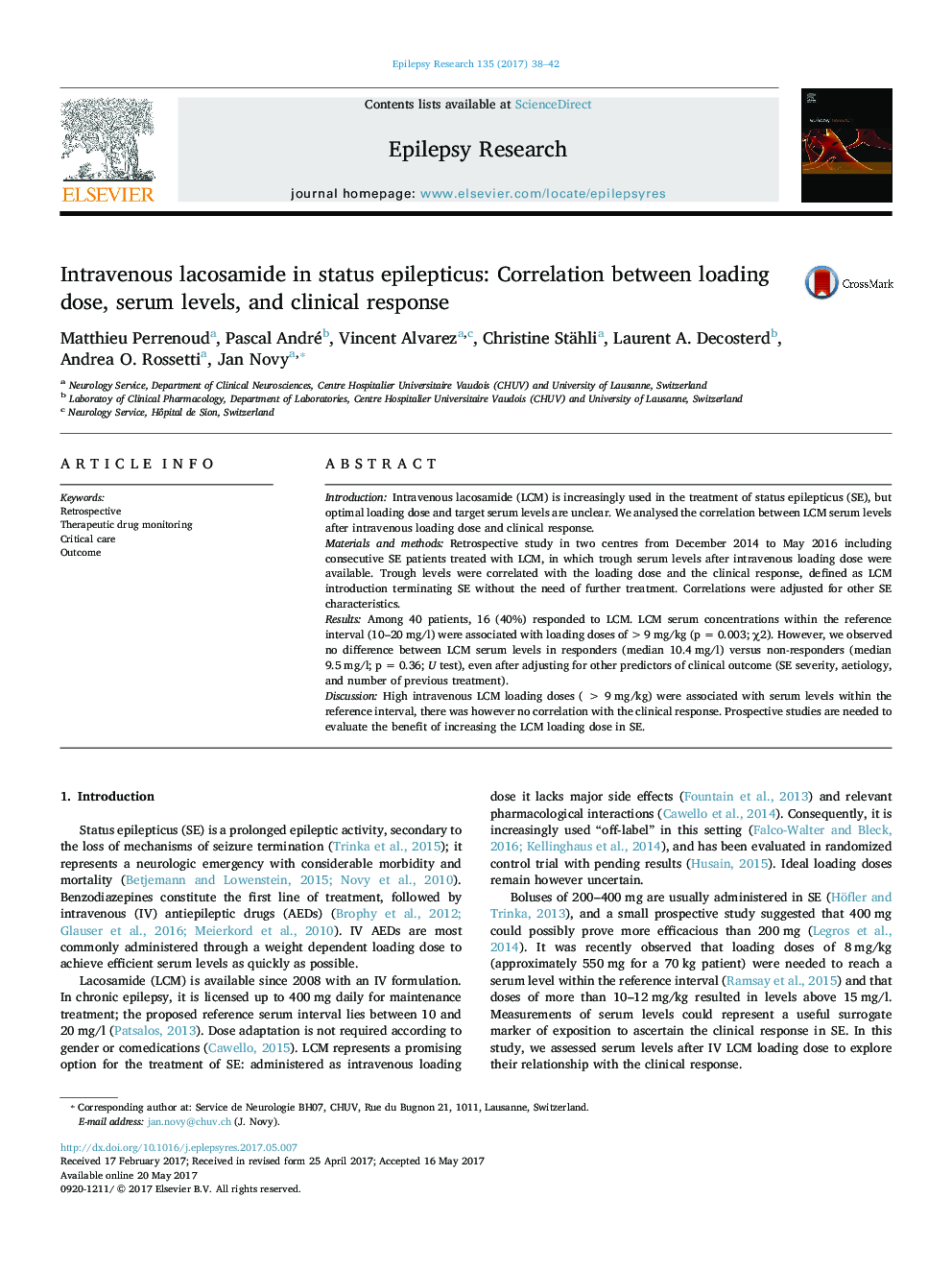| Article ID | Journal | Published Year | Pages | File Type |
|---|---|---|---|---|
| 5628724 | Epilepsy Research | 2017 | 5 Pages |
â¢LCM lacks a defined target serum levels after loading dose in SE.â¢A loading dose of >9 mg/kg is associated with serum levels above 10 mg/l.â¢Higher serum levels are not correlated with better clinical response in SE.
IntroductionIntravenous lacosamide (LCM) is increasingly used in the treatment of status epilepticus (SE), but optimal loading dose and target serum levels are unclear. We analysed the correlation between LCM serum levels after intravenous loading dose and clinical response.Materials and methodsRetrospective study in two centres from December 2014 to May 2016 including consecutive SE patients treated with LCM, in which trough serum levels after intravenous loading dose were available. Trough levels were correlated with the loading dose and the clinical response, defined as LCM introduction terminating SE without the need of further treatment. Correlations were adjusted for other SE characteristics.ResultsAmong 40 patients, 16 (40%) responded to LCM. LCM serum concentrations within the reference interval (10-20 mg/l) were associated with loading doses of >9 mg/kg (p = 0.003; Ï2). However, we observed no difference between LCM serum levels in responders (median 10.4 mg/l) versus non-responders (median 9.5 mg/l; p = 0.36; U test), even after adjusting for other predictors of clinical outcome (SE severity, aetiology, and number of previous treatment).DiscussionHigh intravenous LCM loading doses ( > 9 mg/kg) were associated with serum levels within the reference interval, there was however no correlation with the clinical response. Prospective studies are needed to evaluate the benefit of increasing the LCM loading dose in SE.
